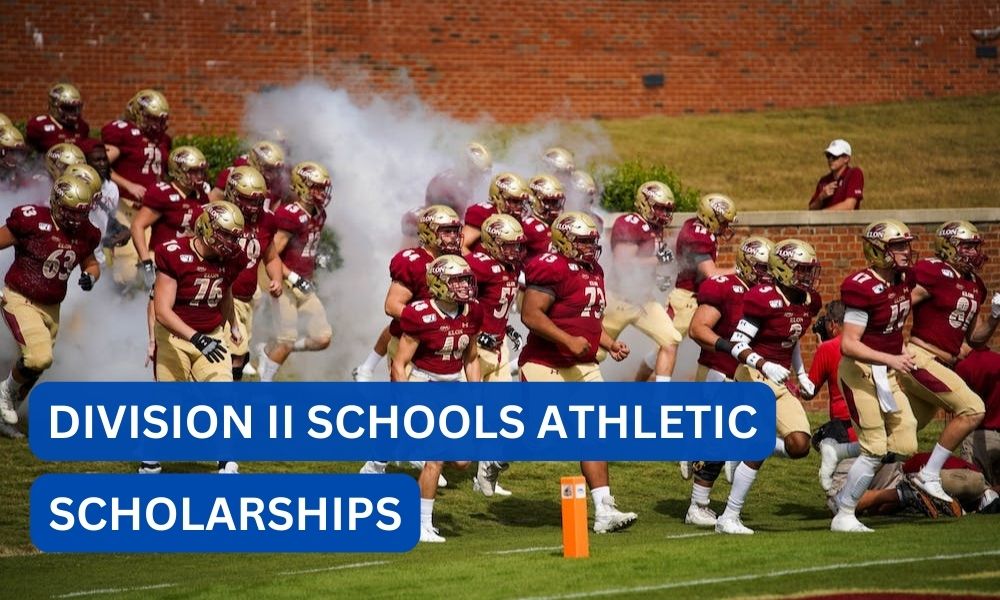When it comes to college athletics, scholarships play a crucial role in attracting talented athletes and building successful sports programs. While most people are familiar with the concept of athletic scholarships at the Division I level, there is often confusion surrounding Division II schools. Can Division II schools give athletic scholarships? In this article, we will explore the rules and regulations surrounding athletic scholarships in Division II and shed light on the opportunities available to student-athletes.
Contents
Understanding Division II Athletics
Before delving into the topic of athletic scholarships, it is important to have a clear understanding of Division II athletics. Division II is one of the three divisions of the National Collegiate Athletic Association (NCAA), alongside Division I and Division III. Division II schools are typically smaller institutions with fewer resources compared to their Division I counterparts.
Despite the differences in resources, Division II schools still offer competitive athletic programs and provide student-athletes with the opportunity to excel both academically and athletically. Division II schools often emphasize a balance between academics and athletics, allowing student-athletes to pursue their passions in both areas.
The NCAA Division II Scholarship Model
Unlike Division I, where athletic scholarships are more prevalent, Division II schools operate under a different scholarship model. The NCAA Division II scholarship model is known as the “partial-scholarship” model, which means that schools have the ability to offer athletic scholarships but are not required to provide full funding for all student-athletes.
Read:Can you submit the same essay to different scholarships?Under the Division II scholarship model, schools have a limited number of scholarships that they can distribute among their athletic programs. These scholarships can be divided among multiple athletes, allowing schools to attract a diverse range of talent. However, it is important to note that the number of scholarships available varies by sport and school.
Division II Scholarship Limits
While Division II schools have the ability to offer athletic scholarships, there are limits on the number of scholarships that can be awarded in each sport. The NCAA sets scholarship limits for each sport to ensure fairness and competitive balance among schools.
For example, in Division II football, schools are allowed to offer a maximum of 36 scholarships per team. This means that schools must carefully allocate their scholarships to recruit the best possible talent while staying within the scholarship limit. Similar limits exist for other sports, such as basketball, soccer, and baseball.
Academic Requirements for Division II Scholarships
In addition to athletic ability, Division II schools also consider academic performance when awarding scholarships. The NCAA requires student-athletes to meet certain academic requirements to be eligible for athletic scholarships.
Student-athletes must have a minimum GPA and meet specific standardized test score requirements to be eligible for Division II scholarships. These academic requirements ensure that student-athletes are not only excelling on the field but also in the classroom.
Read:Can d3 football give scholarships?Case Study: Division II Athletic Scholarships
To better understand the opportunities available to student-athletes at Division II schools, let’s take a look at a real-life case study.
John is a talented soccer player who dreams of playing at the collegiate level. He has received interest from both Division I and Division II schools. While Division I schools can offer him a full athletic scholarship, Division II schools can only provide a partial scholarship.
John decides to visit both types of schools to weigh his options. During his visit to a Division II school, he meets with the coach and learns about the academic support services available to student-athletes. He also discovers that the school has a strong soccer program and competes against other top Division II schools.
After careful consideration, John decides to accept the partial scholarship offer from the Division II school. He values the balance between academics and athletics that the school offers and believes it will provide him with the best overall college experience.
Benefits of Division II Athletic Scholarships
While Division II athletic scholarships may not cover the full cost of attendance, they still offer numerous benefits to student-athletes:
Read:Are there scholarships for room and board?- Financial Assistance: Division II athletic scholarships can help offset the cost of tuition, room and board, and other expenses associated with attending college.
- Opportunity to Compete: Division II schools provide student-athletes with the opportunity to compete at a high level while still maintaining a focus on academics.
- Academic Support: Division II schools often offer academic support services to help student-athletes succeed in the classroom.
- Well-Rounded College Experience: Division II schools emphasize a balance between academics and athletics, allowing student-athletes to pursue their passions in both areas.
Conclusion:
While Division II schools may not offer full athletic scholarships like their Division I counterparts, they still provide valuable opportunities for student-athletes. The NCAA Division II scholarship model allows schools to offer partial scholarships to attract talented athletes while maintaining a focus on academics. Student-athletes who choose to attend Division II schools can benefit from the financial assistance, competitive athletic programs, and well-rounded college experience that these institutions offer. Ultimately, the decision to pursue a Division II athletic scholarship depends on the individual student-athlete’s goals and priorities.









